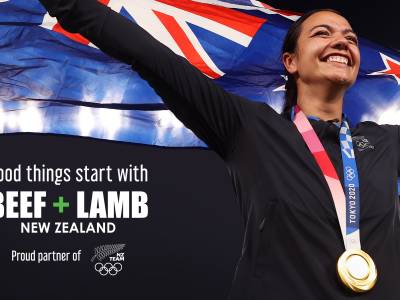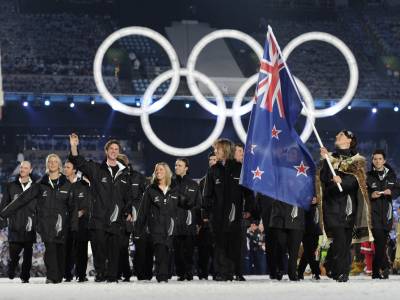Golf will be returning to the Olympic programme at Rio, its first appearance at an Olympics Games for over 100 years.
"It's fantastic to have golf back inside the Olympic movement. Obviously the Olympic Games is a huge worldwide event and one that is very inspirational for all New Zealanders. It will be inspirational for those young players who will see New Zealand's and the world's best players competing, but it will also inspire the everyday golfer to head out and play more golf, or those new to golf to give it a go. I know those players vying for a place on the team are excited about the opportunity, and the anticipation is building." Gregg Thorpe, High Performance Manager Golf NZ.
Qualifying - the road to Rio
The International Golf Federation (IGF) has created an Olympic Golf Rankings (OGF) system, based on the official world golf rankings, as a method of determining eligibility for Rio. Ranking points are earned at tournaments over the 2 years from 14 July 2014 to 11 July 2016.
The top 15 players on the OGF, as at 11 July 2016, will be eligible for the Olympics, with a limit of four players from a given country. Beyond those top 15, players will be eligible based on their OGF ranking, with a maximum of two eligible players from each country that does not already have two or more players among the top 15.
Brazil, as host country, is guaranteed at least one athlete in both the men's and women's competitions.
Lydia Ko is currently ranked number one on the OGF for women, and is obviously well placed in the lead up to qualification for Rio. Danny Lee is also in contention, as is Ryan Fox.
A list of the men and women players currently in an Olympic qualifying position, as one of the eligible 60 players, is released weekly by the IGF and available at www.igfgolf.org
Competition at Rio
The proposed Olympic tournament is the 'stroke play' format for both the men and women. The best players in the world will therefore compete over 72 holes to find out who will be crowned Olympic champions. In the event of a tie for either first, second or third place, a three-hole play-off will determine the medal winner(s).
Both the men's and women's competitions will have 60 players.
Dates
Men's Individual Stroke Play
Rounds 1-3: 11-13 August
Final round: Sunday 14 August
Women's Individual Stroke Play
Rounds 1-3: 17-19 August
Final round: Saturday 20 August
Venue
The purpose-built Olympic golf course is at Reserva de Marapendi in Barra da Tijuca, the district of Rio that will contain the largest number of Rio 2016 Olympic Games venues. It is just 5km from the Athletes' Village and 7km from the Main Press Centre (MPC) and the International Broadcast Centre (IBC).
Stars in the sport
The Olympics will see the world's top golfers competing against each other for Olympic glory. Big golfing names like Rory McIlroy, Jordan Spieth, Jason Day, Bubba Watson, Sergio Garcia, Inbee Park, Susann Pettersen and our own Lydia Ko will likely be playing for the first Olympic gold medals in golf since 1904. The recent form of Danny Lee has most likely confirmed his place at Rio.
Golf explained
Stroke play versus match play
Stroke play consists of counting the total number of shots that the player has taken to reach the end of the course. The current major tournaments take place over 4 days, and the players must therefore play the same course of 18 holes four times, ie, 72 holes. The player who has the fewest number of strokes at the end of the four rounds wins the event.
Match play is a competition format in the form of a duel. Golfers compete hole by hole, and the golfer who wins the most holes wins the match. Match play matches do not have to go the full 18 holes. They often do, but just as frequently one player will achieve an insurmountable lead and the match will end early. For example, if a player is six ahead with five holes to play, the other player cannot possibly win, so the match ends.
What makes up a golf course?
Golf is played on a course generally made up of nine or 18 holes. Each hole is of a variable length and may include a number of natural or artificial obstacles: lakes, trees, hills, rivers or bunkers (a depression filled with sand). Each course is divided into four areas: the tee block; the fairway, where the turf is short; the rough, which is made up the edges of the course and where the turf is higher; and finally the green, where the grass is very short and where the hole is.
We can't forget hazards, which are a massive part of golf. They give players a fear of where not to hit the ball. Water hazards, bunkers and out of bounds all have their own punishments and challenges.
Why so many clubs?
A golfer may have up to a maximum of 14 clubs in their bag. Golf clubs can be classed into four categories: woods are used for long shots and generally used on the tee block at the start of each long hole (par 4 and par 5’s); irons are for more precise intermediate shots, also called approach shots; wedges are specific clubs used for more control closer to the green or to get out of certain difficult situations, such as when the ball is in a bunker; and, finally, putters are reserved for the final shots once on the putting green.
So what is par?
'Par' is the average number of strokes to finish a hole. It is determined by the distance that separates the teeing ground from the flag that indicates the position of the hole on the green. Generally pars are done in three, four or five strokes, ie, pars 3, 4 or 5.
The game of golf consists of reaching each hole with a minimum of strokes – the score is established according to the number of strokes made in comparison to par. 'Making par' means a player has taken as many shots to putt the ball in the hole as was deemed par for that hole, eg, taking four strokes on a hole determined to be a par 4.
At the end of the round of 18 holes, the score is calculated by taking the sum of strokes made in relation to par.
What's a bogey?
A 'bogey' is equal to one shot above par (+1), a 'double bogey' is two extra strokes (+2) and a 'triple bogey' is three more (+3).
And a birdie, eagle and albatross?
Making a 'birdie' means finishing the hole with one stroke below par (-1). An 'eagle' corresponds to two strokes below par (-2), while an 'albatross', commonly referred to as a 'double eagle', is the term for three strokes below par (-3) and is obviously very rare.
Did you know?
A golf ball must weigh no more than 45.93g, and its diameter must be at least 42.67mm. Its shape is that of a sphere, but contains small indentations (between 300-450), which helps keep the ball in the air.
The four major events in men's professional golf are the British Open, the Masters, the US Open and the PGA Championship. The four events together are called the Grand Slam of golf.
In women's professional golf there are five major events – the PGA Championship, the US Open, the British Open, the Evian Championship and the ANA Inspiration.
No player has won all four Grand Slam tournaments in one year. Five players have won all four during their illustrious careers – Gene Sarazen, Ben Hogan, Gary Player, Jack Nicklaus and Tiger Woods. In this modern era Phil Mickelson is chasing a US Open and Rory McIlroy a Masters title to complete their Grand Slam.
Two New Zealanders have won major championships - Sir Bob Charles (1963 British Open) and Michael Campbell (2005 US Open).
Golf balls were originally made of thin leather stuffed with feathers.
New Zealand has the second highest number of golf courses per capita – Scotland has the highest.
The first golf club outside Britain was built in the city of Bangalore in India in 1820.
The chance of two holes in one in a single round is one in 67 million.
Golf balls travel significantly further on hot days.
The longest golf hole in the world is the seventh hole (par 7) of the Sano Course at the Satsuki Golf Club in Japan, which measures 831m.
Many Japanese golfers carry 'hole-in-one' insurance. In Japan, if you hit a hole-in-one it is customary to share your good luck by throwing a party complete with gifts for all your friends.
Today there are over 30,000 golf courses, and the sport is played by over 60 million men and women worldwide.
While James II banned golf as an unwelcome distraction from learning archery, Scottish and English royalty were later keen on the game, with Mary Queen of Scots and James VI were both noted as golfers.
Timeline
1500s - The modern game of golf developed in Scotland in the 15th century.
1764 - Standard 18 hole golf course created at the famous St Andrews course in Scotland when members modified the course from 22 to 18 holes.
1800s - Golf taken to the four corners of the world by Scottish officers who played golf in the British armed forces.
1860 - The Open Championship, the world’s oldest golf tournament in existence and golf's first major, played for the first time at Prestwick Golf Club in Scotland.
1871 - Scotsman Charles Howden introduced the game to Dunedin.
1893 - First New Zealand Amateur Championship played, with both a men’s and a women’s tournament.
1900 - Golf included as a sport at the Paris Olympics, with four countries competing.
1904 - Golf appeared for the last time at the Olympic Games in St Louis, Missouri, USA when the USA and Canada were the only two competing countries.
1939 - New Zealand had 328 affiliated clubs with 29,000 registered men and women golfers.
2009 - International Olympic Committee voted in favour of re-introducing golf as an official Olympic sport at the 2016 and 2020 summer games.
2015 - Around 482,000 kiwis over the age of 18 play golf, and it ranks as the number one sport for men, in terms of participation numbers, and the second highest sport for women.
Tweet Share
Golf Games History
-
Olympic Summer Games Tokyo 2020
1 -
Pacific Games Samoa 2019
-
Olympic Summer Youth Games Buenos Aires 2018
-
Olympic Summer Games Rio 2016
1 -
Olympic Summer Youth Games Nanjing 2014
-
Australian Youth Olympic Festival Sydney 2013
2 -
Pacific Games New Caledonia 2011
-
Olympic Summer Games Sydney 2000
-
Olympic Summer Games St. Louis 1904
-
Olympic Summer Games Paris 1900









